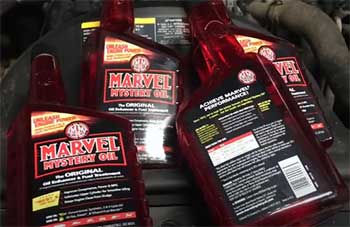If you’re tired of seeing the check engine light on or dealing with sluggish engine performance, Rislone Catalytic Converter Cleaner might be the best fix. Not only does it help in clearing up exhaust issues, but it’s also a great way to save on costly repairs and improve fuel efficiency.
After trying it and seeing the difference firsthand, I can confidently say this cleaner does what it promises. Here’s everything you need to know about using Rislone and why it could be the answer to your vehicle’s exhaust problems.
Understanding Rislone Catalytic Converter Cleaner
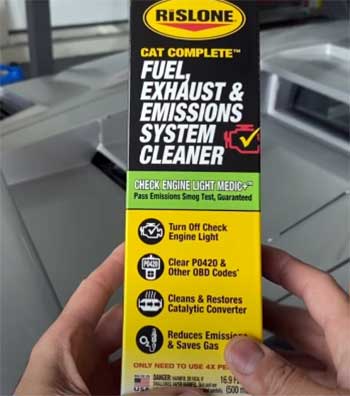
Rislone Catalytic Converter Cleaner stands out among fuel and emissions cleaners because it doesn’t just target the catalytic converter; it takes care of the entire fuel and exhaust system.
Using advanced cleaning agents, it removes carbon deposits, soot, and contaminants that clog up the system, allowing your car to regain lost power and fuel efficiency.
This product is designed to work with gasoline, ethanol, and hybrid engines, making it versatile for different vehicles.
Here How It Works:
The active ingredients react with gases in the combustion process to eliminate carbon and oil deposits.
The cleaner is loaded with high-performing detergents and heavy-duty solvents that scrub fuel injectors, combustion chambers, turbos, and more, giving them a new lease on life.
Pros And Cons of Rislone Catalytic Converter Cleaner
Every product has its strengths and potential downsides. After using Rislone, here are some things to keep in mind to decide if it’s right for you.
Pros
- Improves Fuel Economy and Performance: By clearing out accumulated gunk, the cleaner allows the engine to breathe better. I noticed my car running smoother and even felt a slight improvement in fuel efficiency.
- Saves on Expensive Repairs: Catalytic converter repairs are no joke—they can cost hundreds to thousands of dollars. This cleaner is like an insurance policy, helping maintain your exhaust system and avoiding repairs.
- Easy to Use: Just pour it into the gas tank and drive. There’s no need for complex tools or procedures.
- Suitable for Modern Engines: Whether your car has a turbo, direct-injection, or is a hybrid, Rislone works effectively without risking engine damage.
- Environmentally Friendly: Rislone helps cut down on harmful emissions by reducing hydrocarbons, CO, and NOx emissions. Cleaner fuel and exhaust systems mean you’re not only saving money but also driving more responsibly.
Cons
- Takes Time to Work: Rislone might not work instantly for everyone. Some people report the need to drive more than recommended before seeing results. For me, it took about 150 miles before the check engine light turned off.
- Doesn’t Always Fix Severe Issues: If the catalytic converter is severely clogged or damaged, a cleaner alone might not be enough. In those cases, a full replacement may be the only solution.
- May Not Be Effective on All Vehicles: Some users report mixed results, especially in vehicles with very high mileage or poorly maintained exhaust systems.
How To Use Rislone For Best Results?
Using Rislone is simple, but to get the best results, follow these tips:
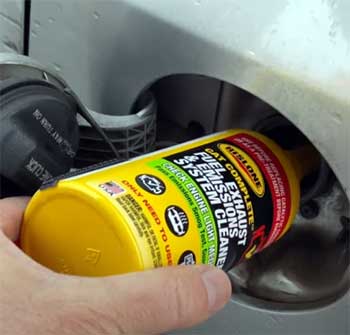
- Add to a Low Gas Tank: Pour the cleaner into your gas tank when it’s around half-full. This concentration helps the cleaner circulate more effectively throughout the exhaust system.
- Drive at Higher Speeds: Take the car for a longer highway drive after adding the cleaner. High speeds heat up the catalytic converter, allowing it to work more efficiently.
- Repeat Every 5,000 Miles: For ongoing maintenance, add a bottle every 5,000 miles. This regular upkeep can prevent future issues and keep your car’s fuel and exhaust system clean.
- Consider Combining with Fuel Injector Cleaner: I sometimes use a bottle of Techron alongside Rislone. The combined cleaning boost keeps my engine smooth and responsive, and I find the results last longer.
How To Maintain Your Catalytic Converter And Keep It Clean?
Maintaining your catalytic converter goes hand-in-hand with getting the most out of Rislone. Here are some practical tips to prevent future build-up:
- Use Quality Fuel: Premium gasoline may cost more but can make a big difference. It burns cleaner, reducing the build-up in your catalytic converter. I usually stick to stations with a good reputation, like Chevron or Texaco, for consistently high fuel quality.
- Drive at Highway Speeds Regularly: City driving often doesn’t generate enough heat for the catalytic converter to clean itself. Taking your car on a 20-minute highway drive once in a while can prevent deposits from building up.
- Fix Engine Issues Promptly: Misfiring or poor engine performance can lead to unburned fuel passing through the exhaust, which is a recipe for clogs. If your car starts showing signs of rough idling or hard starting, get it checked.
- Avoid Short Trips in Cold Weather: Short trips don’t let the exhaust system warm up enough, increasing the risk of condensation and build-up. In colder months, combine errands to give the engine time to fully warm up.
Comparison With Other Catalytic Converter Cleaners
Rislone isn’t the only catalytic converter cleaner out there, so here’s how it stacks up against some popular alternatives:
- Rislone Catalytic Converter Cleaner Vs. Dura Lube Catalytic Converter Cleaner
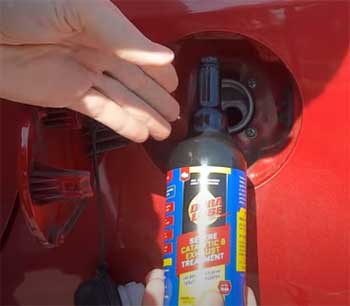
Dura Lube’s Catalytic Converter Cleaner, like Rislone, is designed to reduce emissions and clear out build-up that hampers catalytic converter performance.
However, Dura Lube is often recommended more for basic maintenance and can be a bit less powerful for extensive cleaning.
Rislone, with its heavy-duty detergents and solvents, is particularly effective when dealing with more significant deposits and a vehicle that might already have some performance issues.
Rislone’s formula not only addresses the catalytic converter but also deeply cleans the entire exhaust and fuel system, helping improve overall performance.
If you need a cleaner with versatility and enhanced power, Rislone generally offers better value.
- Rislone Catalytic Converter Cleaner Vs. Cataclean
Cataclean is one of the better-known brands, promising to clean out catalytic converters and improve fuel economy. However, many users report needing multiple bottles before noticing any impact, which can make it pricier.
Personally, I find Rislone’s cleaner to work just as well without having to use more than one bottle. Rislone also seems less aggressive on the fuel system, making it safer for regular use.
- Rislone Catalytic Converter Cleaner Vs. CRC Emissions System Cleaner
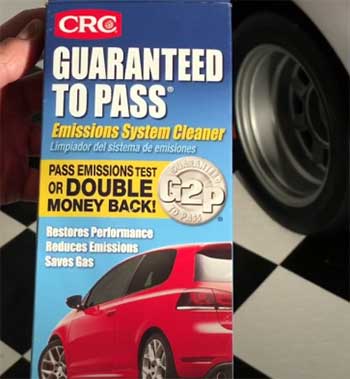
CRC Emissions System Cleaner is popular among those specifically trying to pass emissions tests, as it’s marketed to help reduce pollutants in exhaust systems.
While effective at minimizing emissions in the short term, it’s not as comprehensive as Rislone when it comes to a full-system clean.
CRC mainly focuses on emissions reduction rather than addressing other issues related to fuel or exhaust build-up.
Rislone’s advantage lies in its broader scope—it not only aids emissions but also improves fuel injector and combustion chamber performance, making it a complete solution for both short-term emissions compliance and long-term vehicle health.
If your primary goal is passing an emissions test and you’re not as concerned about overall system health, CRC could be a suitable option. However, if you want a product that maintains and boosts system performance, Rislone is more effective.
Also Read: Is Evan Fischer Catalytic Converter Worth It?
Frequently Asked Questions (FAQ)
In most cases, Rislone starts to work within 100 to 200 miles of driving. However, some users might need to drive a bit more depending on the severity of the deposits.
Effectiveness can depend on the vehicle and specific issues. Rislone is highly effective for overall fuel and exhaust system cleaning, while brands like CRC focus on emissions testing. Rislone’s strength lies in its balance of efficiency and ease of use, making it a great all-rounder.
For optimal performance, use Rislone every 5,000 miles. This regular use maintains a clean catalytic converter and prevents major build-up over time.
Catalytic converter cleaners like Rislone work well in cases where deposits and minor blockages are causing issues. They can’t repair a fully clogged or damaged converter but are effective for maintenance and minor cleaning.
Final Thoughts: Should You Buy Rislone Catalytic Converter Cleaner?
After using Rislone, I believe it’s a worthwhile addition to any vehicle maintenance routine. Whether you’re looking to save on repairs, improve fuel efficiency, or pass an emissions test, this cleaner offers a straightforward solution.
Regular use will keep your car running smoothly and protect your catalytic converter from future issues. So, if you’re considering a cleaner that gives solid, reliable results, Rislone is an excellent choice.
